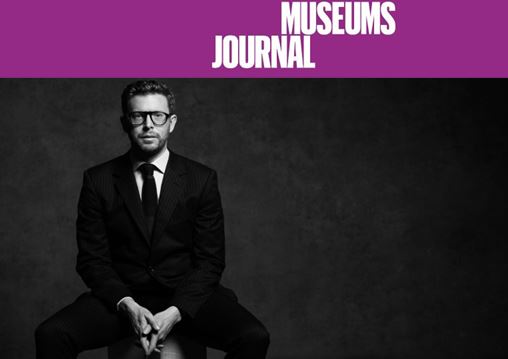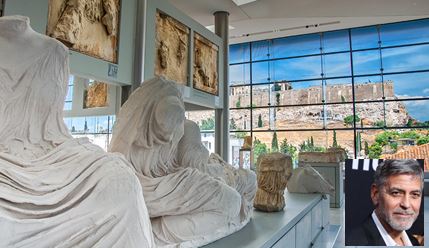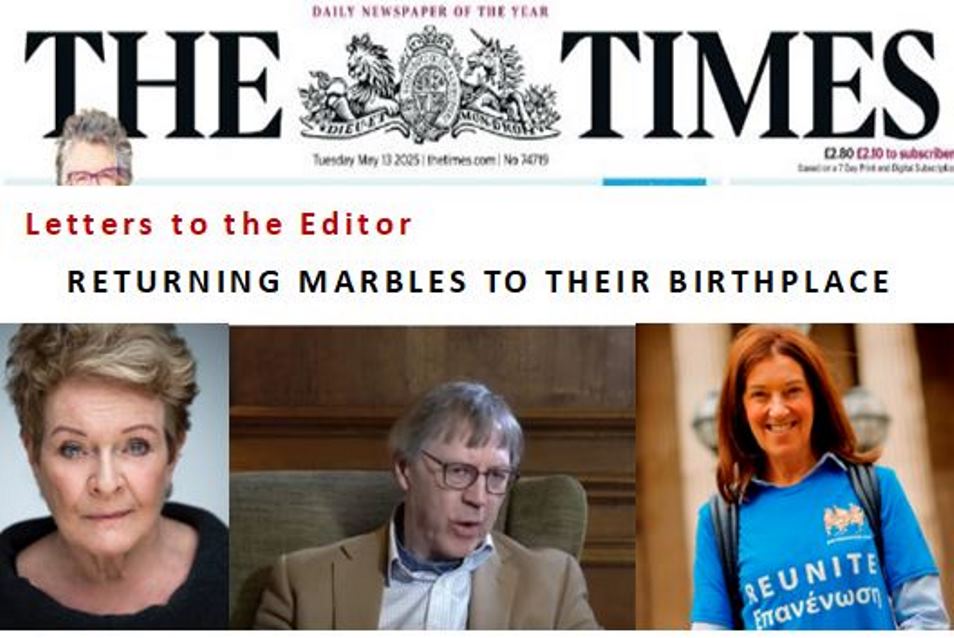What do the Parthenon and a weird Brazilian dinosaur known as “Ubirajara jubatus”* have in common? Apparently, not much. Yet, they are both protagonists of international restitution claims. On one side, Greece’s claim for the return of the Parthenon sculptures held in the British Museum, which will soon become a bicentenary dispute. On the other, Brazil’s claim for the restitution of a fossil holotype previously held in the State Museum of Natural History in Karlsruhe and demanded since early 2021. While Brazilians got to see their fossil return home this month, Greece’s claim remains the longest-standing dispute in the field.
Despite the obviously distinct nature of both claims, they complete each other so as to form a perfect example of how relentlessly repetitive and fallacious the “arguments” presented by retentionists are. In my Master's Thesis (Munich, 2020) I analyzed Greece’s claim against the British Museum and the United Kingdom under the International Human Rights Law framework. For that, I had to deconstruct a recurrent argument for dismissing Greece’s stance: that Lord Elgin had the authorization to remove and export the sculptures.
The argument goes: Elgin obtained a written authorization (the famous “firman”) to remove and export the Parthenon Sculptures, issued in 1801 by the competent Ottoman authority, as Greece was under Ottoman rule. This claim is deeply flawed for a myriad of reasons I explored in the Thesis, but let us assume, for argument’s sake, that the surviving versions of the “firman” do reflect the content of a real document issued prior to the Parthenon’s dismemberment and the dispatch of the sculptures.
Under Ottoman Law in the early 1800s, the Sultan had absolute control over antiquities and only he could authorize such removal. Nonetheless, the document so often relied upon by the UK and the British Museum is signed by Caimacan Seged Abdullah, an acting Grand Vizier who, regardless of his high status in the Ottoman Government, had no authority to issue a firman – definitely not one concerning the export of antiquities.
Likewise, when arguing that the “Ubirajara” fossil was legally exported from Brazil, the authors that described the species claimed they had a written export authorization from an agent of the National Department for Mineral Production. The claim completely ignores that Brazilian Law forbids any export of holotypes (as the “Ubirajara”) and that, even if it were a regular fossil, the competent authority to issue such an authorization would be the National Council for Scientific and Technological Development (CNPq).
Back to the other side of the Atlantic, let us look at what this “firman” actually states. The supposed text of the 1801 Document (as the original has never been found) begins with a description of the activities Elgin wanted his workers to conduct – with no indication that he sought permission to remove any sculptures. The second part of the document expresses that it is the desire of the Ottoman Court to favor Elgin’s requests. The widespread argument that the “firman” authorized the removal of the Parthenon Sculptures relies on an extract from the last paragraph: “[no one should] hinder them from taking away any pieces of stone with inscriptions or figures”. The decontextualized interpretation of this quote ignores that, just above, the document presents an express condition to the authorization: “particularly as there is no harm in the said figures and edifices being thus viewed, contemplated, and designed”.
The sculptures were affixed to the Parthenon and were an integral part of the building. There is simply no good faith interpretation that could lead to the conclusion that the document allowed for the Parthenon’s dismantling. This quote, when properly contextualized, clearly refers to objects dug from the rubble of the Parthenon’s surroundings, which is compatible with what Elgin requested. Thus, even if we were to deem this document reliable, there is no way it authorized the export of the sculptures. What probably happened is that they left Greece in packages with misleading content descriptions (and under heavy bribes, but that's a story for another day...).
Now, it is time to zoom in on the authorization that supposedly allowed for the “Ubirajara” fossil to be exported from Brazil. As explained by Aline Ghilardi, a leading Brazilian paleontologist in the #UbirajaraBelongstoBR campaign, the “authorization” presented by the authors does not mention anything about definitively exporting the materials and does not specify the boxes’ content. In her words, “as it was written, the authors could continue to describe new species for the next 20 years alleging that all holotypes were inside of it”. In any event, the narrative by the authors was considered untrue by German authorities (but that’s another story for another day...).
Almost 200 years separate Greece's first claim over the Parthenon Sculptures and the #UbirajaraBelongstoBR campaign. Apparently, not enough to come up with better excuses for illegal and unethical behavior. Their arguments are old, weak, and honestly – and I say this as a Brazilian – offensive. We will continue to counter them all.
I end this brief commentary by drawing a last parallel between Greece and Brazil, Sculpture and Dinosaur. Two obvious statements that somehow still must be echoed:
#UbirajaraBelongstoBR
#ParthenonBelongstoGreece.
* In case you are wondering about the quotation marks, the article describing the species has since been retracted, which means that this name currently holds no taxonomic value.
Letícia Machado Haertel, Master of Laws (LMU), Specialist in Int. Cultural Heritage Law
BCRPM would like to thank Letícia for this excellent article.
Editorial Footnote: on the pseudo-legality of Elgin’s in fact theft, see now, definitively, Catharine Titi The Parthenon Sculptures and International Law (Springer, 2023).






Comments powered by CComment